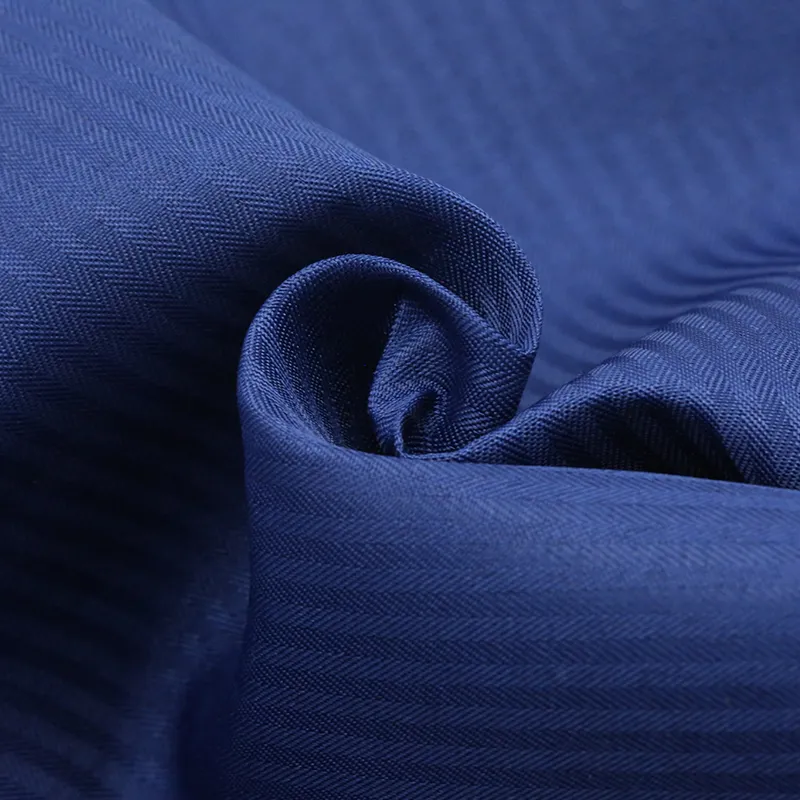Everyday Uses for Popular Polyester Fabrics
When comfort meets versatility in textiles, double brushed poly fabric quickly becomes a top choice for both casual and activewear. This type of fabric is created by brushing both sides of the polyester material, which gives it an incredibly soft, almost suede-like texture. It’s widely favored for making leggings, dresses, T-shirts, and loungewear due to its excellent stretch and breathability. Beyond its luxurious feel, it is also known for being durable, lightweight, and wrinkle-resistant, making it perfect for all-day wear. Crafters and fashion designers enjoy working with double brushed poly because it drapes beautifully and resists pilling, even after many washes. This fabric is a go-to for anyone who values comfort without sacrificing style.

Polyester Upholstery Fabric for Durable Décor
In the world of interior design, polyester upholstery fabric plays a crucial role in creating stylish yet resilient home environments. Polyester, being naturally strong and resistant to stretching and shrinking, is a reliable option for upholstery in high-traffic areas. Whether it's used for couches, chairs, or decorative pillows, this fabric maintains its color and shape over time, even with frequent use. It also resists stains and fading, making it ideal for families with kids or pets. With modern advancements in textile technology, polyester upholstery fabrics now come in a range of textures and finishes, from plush velvet to woven tweeds, offering endless design possibilities. Because it is both practical and affordable, polyester upholstery has become a staple in both residential and commercial décor.
100 Percent Polyester Fabric in Daily Use
Known for its durability, affordability, and ease of maintenance, 100 percent polyester fabric is one of the most commonly used materials in the textile industry. This fabric type is often found in everyday products such as bed sheets, curtains, sportswear, and work uniforms. Its synthetic nature gives it resistance to shrinking and wrinkling, while also allowing for quick drying and easy cleaning. While older polyester fabrics had a reputation for being stiff or less breathable, innovations in fiber processing have resulted in much softer and more comfortable variants. Because it doesn't absorb moisture, it’s also a good choice for moisture-wicking garments and outdoor gear. Its consistent performance and long-lasting nature make 100% polyester fabric a smart pick across industries.
Different Types of Polyester Fabric for Every Need
The textile world offers a wide array of different types of polyester fabric, each tailored for specific applications. From PET (polyethylene terephthalate) and PCDT (poly-1,4-cyclohexylene-dimethylene terephthalate) to microfibers and recycled polyesters, each type serves a unique purpose. PET is the most common and used in clothing and packaging, while PCDT is stronger and more elastic, often used in furnishings. Microfiber polyester is ultra-soft and used in cleaning cloths, beddings, and high-performance apparel. Recycled polyester, made from plastic bottles or post-consumer waste, offers an eco-conscious alternative with nearly identical performance. With so many varieties available, designers and manufacturers can select the ideal polyester type based on strength, finish, feel, and sustainability. These differences are key in matching the right fabric to the right function.
100 Percent Polyester Fabric FAQs
What makes 100 percent polyester fabric so durable?
Its synthetic fibers are tightly woven and naturally resistant to stretching, shrinking, and wrinkling, making it highly durable for everyday use.
Can 100 percent polyester fabric be used in warm weather?
Yes, many modern polyester fabrics are lightweight and breathable, especially those designed with moisture-wicking properties suitable for warm climates.
Is 100 percent polyester fabric environmentally friendly?
While traditional polyester is not biodegradable, recycled polyester options are available, offering a more sustainable alternative.
How do I care for 100 percent polyester fabric?
It is easy to care for—simply machine wash in cold or warm water and tumble dry on low. It resists wrinkles, so minimal ironing is needed.
What are the disadvantages of 100 percent polyester fabric?
Some users may find it less breathable compared to natural fibers, and it can sometimes hold onto odors if not properly washed.
-
Hot Sale 180D CEY Crepe AirFlow Woven Fabric 100% PolyesterNewyddionNov.14,2025
-
Twill TR Fabric for Elastic Suits & Trousers, ShrinkproofNewyddionNov.14,2025
-
Grey Muslin Fabric — Soft, Durable, Bulk & Custom SizesNewyddionNov.14,2025
-
CEY Crepe Fabric, Plain Woven Airflow Polyester TextileNewyddionNov.14,2025
-
Wholesale Custom TR Fabric 80/20 Soft Arabic Thobe FabricNewyddionNov.14,2025
-
Polyester Cloth - Durable, Wrinkle-Resistant, Factory DirectNewyddionNov.05,2025
-
TR 80/20 Poly Viscose Twill Thobe & Suiting Fabric Easy-CareNewyddionNov.05,2025











